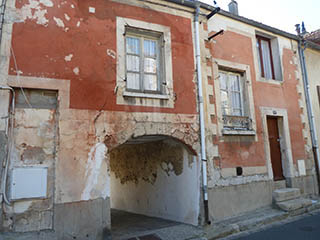Prochain point : lat="49.013948" lon="1.946811"

Wine-producers' houses
Wine-growing on the slopes of the Seine
A village of wine-growers...
Overlooking the Seine, the village of Evecquemont stands on a sunny hillside that is good for growing grapes. In 1782, small, divided-up plots covered around 20% of the commune's land. The most common grape varieties were meslier, meunier, morillon, pinot noir and gamay noir. In 1817, 35 out of the 337 inhabitants were wine-producers. In the eighteenth century, the tax on wine was increased to 30% of the selling price. As a result, many vineyards were uprooted and much less of the land was cultivated. Climate conditions and the epidemic of phylloxera that assailed France from 1861 onwards were also partly responsible for the decline. The area of vineyards fell from 14.5 hectares in 1825 to 11 in 1872, and plummeted to just two in 1900. On the eve of the First World War, all the vineyards had gone, giving way to orchards, cereal crops and market gardening.
...with adapted architecture
Signs of its wine-growing past are still clearly visible in the village today, with street names such as 'Ruelle du Pressoir' ('Wine Press Alley') and the specific architecture of the buildings. Wine-producers' houses can be recognised by their outdoor stone staircases and their cellars overlooking the street. Some houses were built around a little courtyard accessed by a carriage entrance or a covered porch; the storeroom and wine cellar would then be at the end of courtyard. Others were built on more than one level, with a storeroom, a little cowshed and a communal room on the ground floor, a bedroom on the first floor and an attic for storage on the top floor.





